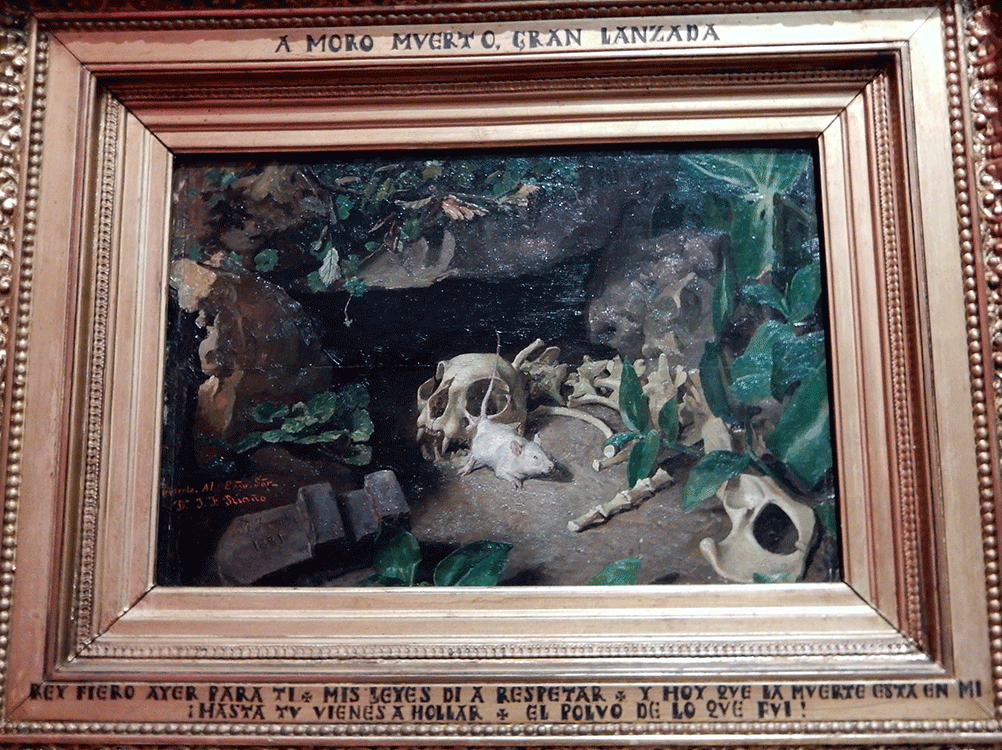“Dying Moments: Kicking a Man When He’s Down,” Bernardo Ferrandiz y Badenes (1835-1885), 1881
From Museum of Malaga label: This allegorical composition alludes to an episode in the artist’s life. A man of choleric temperament, he had a run-in with a fellow Academy member… which resulted in Ferrandiz being tried and sent to prison. Deeply shaken by this event, which led to his removal from the post of director of the San Telmo Fine Art School and social and personal disgrace, the once-haughty artist depicted himself as the skeleton of a cat. Only then, when the feline is “down,” so to speak, does the weakest of its sworn enemies, the mouse, dare to scurry among its remains.
Pondered how to pick a piece of art to represent a museum’s enormous collection…. Not sure why this painting by the man regarded as a founder of the Malaga School of painting was nominated, except Day of the Dead has been on my mind.
The Mister spied the painting first, perhaps drawn by the unusual printing painted directly on the frame. Somewhat illiterate in Spanish (understatement), I am label dependent. But what a great personal story – a tale of the politics of art – lurks within that frame.
The Museum of Malaga occupies the Palacio de la Aduana. The former customs house was commissioned by King Charles III (1716-1788) in 1787 in recognition of Malaga’s major role as a maritime trading center.
Two collections, one of fine arts and one of archaeology, were merged to become the Malaga Museum of Art and moved into the almost 200,000 square-foot neoclassical building in 2016. A lot to wander through and absorb, but here’s an abbreviated armchair tour.
Loved the horse “volunteering” his serum to inoculate a child in the 1900 painting by Enrique Borras. But my particular favorite is Enrique Simonet’s 1890 painting of an autopsy – “Anatomy of the Heart: And She Had a Heart.” Alas, now she has none. Seems a screen-shot from a macabre film.


























































